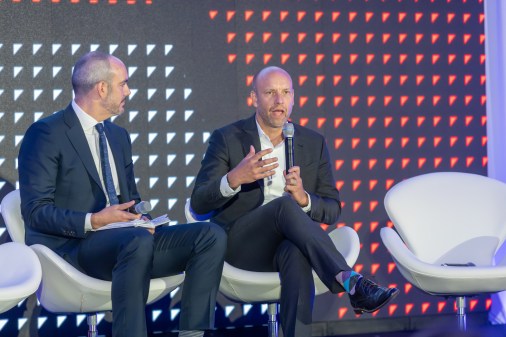Social Security CIO: IT modernization can’t be ‘safe, comfortable’

As agency CIOs consider modernizing their systems, they must look beyond a slight increment of what’s being done today, particularly for those whose legacy systems were built decades in the past, the Social Security Administration’s IT chief said Wednesday.
“If your agency is 10, 15, 20 years behind the state of the art today, technology is advancing so rapidly that you’ll never be able to incrementally catch up,” SSA CIO Rob Klopp said at AFCEA Bethesda’s Health IT Day. “You will not be able to take a 20-year-old technology and try to incrementally catch up to technology that’s moving away from you. What you’re going to have to do is throw it out and start all over again.”
Klopp himself is experiencing restarting again from scratch. His agency runs about 60 million lines of decades-old COBOL code, he said. To modernize, he’s pushing for about $300 million to overhaul SSA’s IT infrastructure.
[Read more: Social Security planning $300M IT overhaul]
He said it’s particularly important as Congress deliberates on IT modernization legislation, which may give agencies the money they need to buy and build modern systems, that agencies take a perspective that “looks at least five years in the future.”
“There’s lots of talk of IT modernization and I think there’s going to be funding that comes from Congress to the tune of millions of dollars to help us all do that,” Klopp said. “But I think we need to have a perspective on what it means to be modern. And that perspective can’t be just a slight increment over what we do today.”
Moving to the cloud, for instance, isn’t going to make an agency definitively modern, he said, especially if a more market-disrupting technology emerges. “The flip side of the coin around IT modernization is a target of what we’re going to modernize toward. That target can’t be safe, comfortable technology, kind of the way we see it today.”
In the health IT sector, the focus is almost exclusively around electronic health records — at least for now, Klopp said.
“Right now we think electronic medical records are really, really cool, but the reality is five years from now, the Internet of Things is going to cause them to be maybe a small part of where we get medical evidence from — it’s going to be from your [Apple Watches] and other wearable devices, everything that’s wired to the Internet of Things,” he said.
Klopp added: “I have to build systems today that are capable of supporting not just some things that I might be able to imagine are coming — I have to be able to build systems today that will expand and stretch and be elastic in that ways that I maybe can’t even imagine today.”
The Apple iPhone is Klopp’s example of choice to explain why this is. Before its launch a decade ago, the world didn’t know how revolutionary the iPhone and the smartphone in general would become to daily life. And for those in 2006 who developed technologies without foresight of the mobile revolution ahead of them, their “modern” systems may have been new, but they quickly quickly grew outdated.
“I can’t build systems today that miss whatever the next iPhone thing is,” Klopp said.






